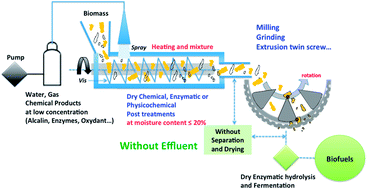The transformation of lignocellulosic biomass into biofuels represents an interesting and sustainable alternative to fossil fuel for the near future. However, one still faces some major challenges for the technology to be fully realized including feedstock costs, novel pretreatment processes, production, transportation, and environmental impact of the full chain. The development of new technologies focused to increase the efficiency of cellulose conversion to biofuels determines successful implementation. Mechanical fractionation is an essential step in order to increase final carbohydrate output, appropriate particle sizes and densification, enzymatic accessibility, and bioconversion affectivity without the production of toxic side streams. In this review article, we surveyed a substantial amount of previous work in mechanical fractionation or pretreatments of a variety of lignocellulosic biomasses; these include numerous milling schemes and extrusions, and their impacts on the physical and physicochemical properties of the lignocellulosic matrix (crystallinity, surface area, particle size, etc). We have also compared results with other pure chemical and physicochemical pretreatments in order to show the new aspects and advantages/disadvantages of such an approach. Last, but not least, the effect of mechanical treatment and physical properties on enzymatic hydrolysis and bioconversion has been discussed, with potentially interesting dry lignocellulosic biorefinery schemes proposed.
